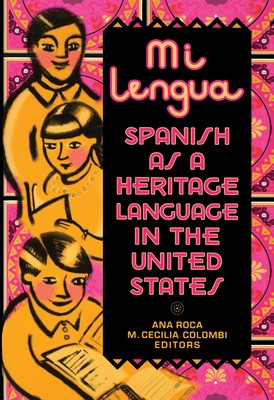
- We will send in 10–14 business days.
- Publisher: Georgetown University Press
- ISBN-10: 0878409033
- ISBN-13: 9780878409037
- Format: 15.3 x 23.3 x 1.8 cm, softcover
- Language: English
- SAVE -10% with code: EXTRA
Mi Lengua (e-book) (used book) | bookbook.eu
Reviews
Description
This volume examines issues in the research, theory, and practice of teaching Spanish as a heritage language in the United States. It addresses questions that have surfaced as an increasing number of Latinos have sought to become more proficient in a language to which they have had some exposure to in childhood but in which they are not fluent. Each chapter includes a section on pedagogical implications. Heritage language learners encompass a wide range of proficiency, from those who have a low level of listening comprehension from hearing their parents speak to those who are nearly, but not quite, bilingual or fully literate in Spanish. These learners have needs that differ from students learning Spanish as a second language with no prior knowledge of it. The members of the AATSP have identified teaching heritage learners as the second greatest area of concern (after proficiency testing). This book was developed (the essays were commissioned for it, not resulting from a conference) in response to a perceived hunger for this kind of information. The AATSP and ACTFL have each published a book on the subject (both in 2000, I think), but not much else is available except for Roca's work and journal articles. Some of the essays (5 of 13) are written in Spanish, which is common practice in collections of essays in the field of Spanish linguistics.
EXTRA 10 % discount with code: EXTRA
The promotion ends in 18d.12:37:20
The discount code is valid when purchasing from 10 €. Discounts do not stack.
- Publisher: Georgetown University Press
- ISBN-10: 0878409033
- ISBN-13: 9780878409037
- Format: 15.3 x 23.3 x 1.8 cm, softcover
- Language: English English
This volume examines issues in the research, theory, and practice of teaching Spanish as a heritage language in the United States. It addresses questions that have surfaced as an increasing number of Latinos have sought to become more proficient in a language to which they have had some exposure to in childhood but in which they are not fluent. Each chapter includes a section on pedagogical implications. Heritage language learners encompass a wide range of proficiency, from those who have a low level of listening comprehension from hearing their parents speak to those who are nearly, but not quite, bilingual or fully literate in Spanish. These learners have needs that differ from students learning Spanish as a second language with no prior knowledge of it. The members of the AATSP have identified teaching heritage learners as the second greatest area of concern (after proficiency testing). This book was developed (the essays were commissioned for it, not resulting from a conference) in response to a perceived hunger for this kind of information. The AATSP and ACTFL have each published a book on the subject (both in 2000, I think), but not much else is available except for Roca's work and journal articles. Some of the essays (5 of 13) are written in Spanish, which is common practice in collections of essays in the field of Spanish linguistics.


Reviews